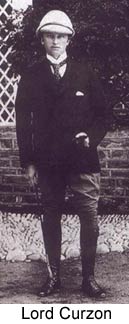

 |  |
 Self-reliance also meant an effort to set up Swadeshi or indigenous enterprises. The period saw a mushrooming of Swadeshi textile mills, soap and match factories, tanneries, banks, insurance companies, shops, etc. While many of these enterprises, whose promoters were more endowed with patriotic zeal than with business acumen were unable to survive for long, some others such as Acharya P.C. Ray's Bengal Chemicals Factory, became successful and famous. Self-reliance also meant an effort to set up Swadeshi or indigenous enterprises. The period saw a mushrooming of Swadeshi textile mills, soap and match factories, tanneries, banks, insurance companies, shops, etc. While many of these enterprises, whose promoters were more endowed with patriotic zeal than with business acumen were unable to survive for long, some others such as Acharya P.C. Ray's Bengal Chemicals Factory, became successful and famous.It was, perhaps, in the cultural sphere that the impact of the Swadeshi Movement was most marked. The songs composed at that time by Rabindranath Tagore, Rajani Kanta Sen, Dwijendralal Ray, Mukunda Das, Syed Abu Mohammed and others later became the moving spirit for nationalists of all hues, 'Revolutionaries or Gandhian' and are still popular. Rabindranth's Amar Sonar Bangla, written at that time, was to later inspire liberation struggle of Bangladesh and was adopted as the national anthem of that country in 1971. The Swadeshi influence could be seen in Bengali folk music popular among masses and it evoked collections of Indian fairy tales such as, Thakurmar Jhuli (Grandmother's Tales) written by Dakshinaranjan Mitra Majumdar which delights Bengali children to this day. In art this was the period when Abanindranath Tagore broke the domination of Victorian naturalism over Indian art and sought inspiration from the rich traditions of Rajput, Ajanta and Ellora paintings. Nandalal Bose, who left a major imprint on Indian art, was the first recipient of a scholarship offered by the Indian Society of Oriental Art founded in 1907. In science, Jagdish Chandra Bose, Prafulla Chandra Ray, and others pioneered original research that was praised the world over. next page >> |
Copyright ©2000 indiansaga.info. All rights reserved.
By using this service, you accept that you won't copy or use the data given in this website for any commercial purpose.
The material on indiansaga.info is for informational & educational purpose only.
This site is best viewed at 800 X 600 picture resolution.